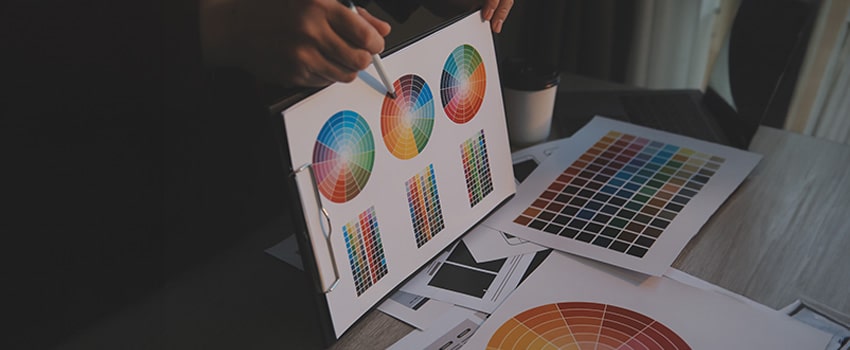
Have you ever strolled through a store, glanced at a packed shelf, and instantly picked out your favorite brand without a second thought? That’s brand recognition in action—it’s what makes people stop scrolling or shopping and say, “That’s the one I trust.”
Picture this: Your brand catches someone’s eye. They remember it. They choose it over others. They tell their friends about it. Soon enough, you’re charging premium prices while spending less on marketing. It’s a beautiful cycle that feeds itself—the more people recognize your brand, the more they trust it, and the more they pick it over others.
You’re about to discover exactly how to build that kind of memorable brand. We’ll peek inside your customers’ minds to understand why certain brands stick while others fade away. You’ll learn practical ways to create visual elements that grab attention, and get the tools to measure how well people actually remember your brand. Ready to make your brand unforgettable?
What Is Brand Recognition and Why Does It Matter?
Picture yourself walking down a supermarket aisle. Without reading a single label, you spot your favorite coffee brand from its signature red packaging. That’s brand recognition working its magic.
Brand recognition happens when customers instantly connect your visual elements—logos, colors, packaging, even jingles—to your business. Sounds simple, right? Let’s dig deeper.
How recognition impacts consumer decisions
Let me share something fascinating about your brain: it loves familiar things. Scientists call this the mere-exposure effect. That’s why you’ll often pick a brand you recognize over one you don’t.
The numbers tell an interesting story. 77% of consumers stick to brands sharing their values. Even more surprising? Once customers become loyal, 13% don’t even check prices anymore.
Your brand’s journey typically looks like this:
- Brand rejection (ouch—bad experiences)
- Brand ignorance (who are you?)
- Brand recognition (hey, I know that logo!)
- Brand preference (I'll pick this one)
- Brand loyalty (I won't buy anything else)
Want to know something cool? Strong brand recognition supercharges your online presence too. People share, like, and follow brands they recognize way more often.
The business value of being instantly recognizable
Let’s talk money. Companies with stellar branding outperform others by a whopping 73%. And get this—68% of businesses say consistent branding boosted their revenue by at least 10%.
Here’s what strong recognition gets you:
- Premium pricing power: Recognized brands can charge more—people happily pay extra
- Customer loyalty: Trust drives 74% of buying decisions
- Word-of-mouth magic: 62% of Gen Z folks recommend brands they know, while only 45% of boomers do the same
- Market dominance: One-third of companies say consistent branding pumped up revenue by 20% or more
Sometimes, brands become so recognizable, they become the category name itself. Think about it—when’s the last time you asked for a “tissue” instead of a “Kleenex”?
Here’s something wild: Research shows brand value makes up about a quarter of a company’s intangible market value. That’s right—your brand recognition isn’t just marketing fluff, it’s cold, hard business value.
Bottom line? Brand recognition builds the foundation for everything else—trust, loyalty, and growth. The stronger your recognition, the more likely customers pick you over competitors, even in today’s crowded market.
The Psychology Behind Memorable Brands
Ever wonder why some brands stick in your head while others vanish like yesterday’s breakfast? Your brain plays favorites—especially with brands. Out of thousands of marketing messages bombarding you daily, only a handful make the cut into your long-term memory.
How human memory processes brand elements
Here’s something fascinating about your brain—it processes brand information like a three-step dance. First comes the attention grab (that catchy jingle or eye-catching logo). Next, your short-term memory holds onto it briefly. Finally, if you’re really impressed, that brand earns a permanent spot in your long-term memory.
Your brain hates wasting energy. “If you spend a lot of time on cognitive functional things, you get glutamate markers in your prefrontal cortex that give you a headache,” says neuroscience research. No wonder we love brands that make decisions easier!
Think about how you remember things. You probably connect new information to stuff you already know, right? That’s exactly how brand memory works. When brands tap into familiar territory, they’re basically giving your brain a shortcut to remember them.
The role of emotion in brand recall
Let me share a wild success story. One bank created a credit card specifically designed to hit Millennials in the feels. The result? Use jumped by 70% and new accounts shot up 40%.
Here’s the kicker—Harvard Business School found that 95% of purchasing decisions come from emotion, not logic. Want more proof? Emotional ads boost recall by 20% and drive six times more action than rational ones.
Your emotional brain (technically called the limbic system) doesn’t just process feelings—it’s your memory’s best friend. That’s why stories that make you feel something stick better than plain old facts and figures.
Core Elements of a Recognizable Brand Identity

Think of your brand like a house. You wouldn’t build one without a solid blueprint, right? Same goes for your brand identity. Let’s explore the building blocks that make people stop, notice, and remember your brand.
Visual identity components that drive recognition
Here’s something that’ll blow your mind—color alone boosts brand recognition by up to 80%. That’s right, just color. But there’s more to your visual identity than picking pretty colors.
Your visual toolkit needs these essential pieces:
- Logo - Your brand's signature move (think Nike's swoosh) that speaks without words
- Color scheme - Your brand's outfit that sets you apart and plays mind games (the good kind)
- Typography - Your brand's accent—every font tells a different story
- Shape - Your brand's silhouette that shows up everywhere
- Imagery - Your brand's photo album that paints the full picture
Your logo? That’s your brand’s handshake with the world. The trick lies in keeping it simple yet unique—nobody wants a logo that looks like a math equation, but it shouldn’t be a copycat either. And those fonts you pick? They’re not just letters—they’re your brand’s voice in visual form.
Verbal identity: Names, taglines, and voice
Sure, pretty pictures catch eyes, but words capture hearts. Your verbal identity isn’t just what you say—it’s how you say it.
Your brand name hits customers’ ears first. Pick something memorable, unique, and easy to pronounce (unless you enjoy watching people stumble over your name).
Think about your brand voice like your personality at a party. Most brands pick three or four traits—maybe you’re the casual, positive, thoughtful type. Your tone? That’s how you adjust your voice depending on who you’re talking to and what’s happening.
Remember Apple’s “Think Different”? That tagline didn’t just sound cool—it spoke to rebels while promising Apple would always march to its own beat.
Creating a Distinctive Brand Visual Identity
Colors boost brand recognition by up to 80%. That’s right—just picking the right colors makes your brand almost twice as memorable. Let’s unpack the secret sauce behind visuals that stick in people’s minds.
Logo design principles for memorability
Your logo works like a first impression at a party—you’ve got seconds to make it count. The best logos? They’re like perfectly crafted one-liners: simple, memorable, and impossible to forget.
Here’s what makes logos stick:
- Keep it simple — Fancy doesn't mean better. Simple logos work everywhere, from tiny app icons to massive billboards
- Tell one story — Your logo should whisper one clear message, not shout a complicated novel
- Stay relevant — Make sure it fits your brand like a glove
- Find balance — Think yin and yang—perfect proportion creates harmony
- Test it — Show it to strangers for a split second. If they remember it, you're golden
Here’s something most designers miss—technical perfection doesn’t guarantee memorability. What matters? Standing out while speaking your brand’s truth.
Strategic use of color psychology
Colors mess with your brain—in the best way possible. Each shade triggers different emotions, making color choice your secret weapon in branding.
Think about it. Blue whispers “trust me” (perfect for banks and tech companies). Red screams “look at me!”—that’s why fast-food joints love it (bonus: it actually makes you hungry!). Green? That’s nature’s calling card. Black? Pure sophistication.
Want a mind-blowing stat? 90% of your first impression comes from color. And get this—93% of folks buy based on looks alone. Hillary Weiss nails it: “I’m a big fan of subverting expectations” instead of playing it safe with industry colors.
Typography and imagery choices that stand out
Typography isn’t just fancy letters—it’s your brand’s accent. Each font family tells its own story:
Script fonts strut like a fashion model (hello, Instagram and Coca-Cola). Serif fonts stand tall like a British butler (looking at you, New York Times). Sans serif? They’re your friendly neighborhood tech company (waves at Google).
But visuals go beyond pretty fonts. Dell gets it right—showing real people in real situations, making customers think “hey, that could be me”. Cisco plays it smart with natural lighting, creating that open, honest vibe.
Your brand’s photo album needs rules—style guides keeping everything consistent across every single touchpoint. Think of it as your brand’s visual playlist—every image should hit the same beat.
Mix these ingredients right—unforgettable logo, strategic colors, perfect typography, and spot-on imagery—and you’ll cook up a visual identity that stops scrollers in their tracks. That’s how you build a brand that sticks.
Consistency: The Key to Brand Recognition
Picture building a house without blueprints. Scary, right? That’s what happens when brands skip consistency. Here’s something wild—brands that stay consistent are 3.5 times more likely to grab attention. Let’s dig into why consistency matters and how to nail it.
Developing brand guidelines
Think of brand guidelines as your brand’s recipe book—they tell everyone how to cook up your brand’s perfect look, sound, and feel. Not just some vague rules, but your brand’s DNA written down.
Your guidebook needs these ingredients:
- Visual stuff: Every detail about your logo, exact color codes, font rules, and design must-haves
- Voice rules: How your brand talks, shifts tone, and tells stories
- Real examples: Showing, not just telling, how everything works in the real world
One creative director nails it: “More than identifying what the pieces are, brand guidelines’ job is to show you how to use those things”.
Here’s a shocker—while over 85% of companies have guidelines, only 30% actually follow them. Don’t be that company.
Maintaining consistency across touchpoints
You know those friends who act completely different every time you see them? Pretty hard to trust them, right? Same goes for brands. When you stay consistent, good things happen—68% of businesses saw their revenue jump by 10% or more.
Your brand needs to feel the same everywhere—website, Instagram, customer service calls, even your product labels. Brand experts put it perfectly: “What you’re doing on your website matches what you’re doing on social and how you’re sending your email letter that looks consistent with your product label”.
Making this happen takes three steps:
- Put all your brand stuff in one easy-to-reach digital spot
- Regular brand checkups to catch any weird inconsistencies
- Get everyone on board—not just your creative team
But remember this golden rule: “Brand guidelines should be exactly that—guidelines”. Stay flexible while keeping your core intact.
Brand Recognition Strategies That Actually Work
Ever notice how some brands seem to pop up everywhere, yet never feel annoying? That’s no accident. Let’s dive into strategies that actually stick—where science meets creativity to make your brand unforgettable.
Repetition with purpose
Here’s something most marketers get wrong—they think more exposure equals better recognition. Research confirms that the more people encounter your message, the more likely they are to remember it. But there’s a catch. Nobody likes a broken record.
Want to make repetition work? Try this:
- Keep your core message, but dress it up differently
- Mix up your channels (maybe a video today, blog post tomorrow)
- Watch your timing—nobody likes that friend who talks too much
Here’s the cool part—when people keep seeing you around, they start trusting you. Don’t shy away from repeating yourself; your brand needs that consistent voice. The numbers back this up—consistent branding can pump up revenue by 23%.
Pattern interruption techniques
Remember the last time something unexpected made you stop scrolling? That’s pattern interruption at work. It’s like tapping someone’s shoulder in a crowded room. Pretty powerful stuff, considering people ignore 58% of the 347.3 billion emails flying around daily.
Let me share something wild—this technique slashes advertising costs by half while boosting click rates to 3-5%. Even better? Pattern-interrupt campaigns can double or triple your ROI compared to traditional ads.
The trick? Be surprising but relevant. You want heads turning for the right reasons, not because you’re the weird one at the party.
Leveraging distinctive brand assets
Think about this—color alone boosts brand recognition by 80%. Even crazier? People remember your colors better than your name (by 81%).
You know what I’m talking about—Mastercard’s red and yellow circles, the Colonel’s friendly face, that Intel sound that screams “computer”. Fun fact: your own unique brand elements work better than borrowing celebrity power.
Here’s a pro tip—check which of your brand elements score high on both uniqueness and familiarity. And don’t sleep on sound—audio signatures often pack more punch than visuals, even though fewer brands use them.
Conclusion
Here’s something wild—companies that nail consistent branding outperform their competitors by 73%. Not just by a little, but by a landslide. Those who build distinctive brand assets? They’re not just winning today’s sales—they’re banking tomorrow’s growth.
Building unforgettable brand recognition isn’t rocket science, but it’s not a walk in the park either. Think of it like cooking a perfect meal—you need the right ingredients (your visual identity), the perfect seasoning (your verbal elements), and that special something (sensory experiences) that makes people come back for seconds.
Sure, it takes time. Yes, it demands dedication. But watch what happens when customers start trusting your brand like an old friend. Your market share grows. Your competition shrinks in the rearview mirror.
Remember this: Your brand’s story isn’t written in stone. Let it evolve, but keep measuring what works. Think of those metrics as your brand’s health checkup—they’ll tell you exactly where to adjust without losing your soul.




